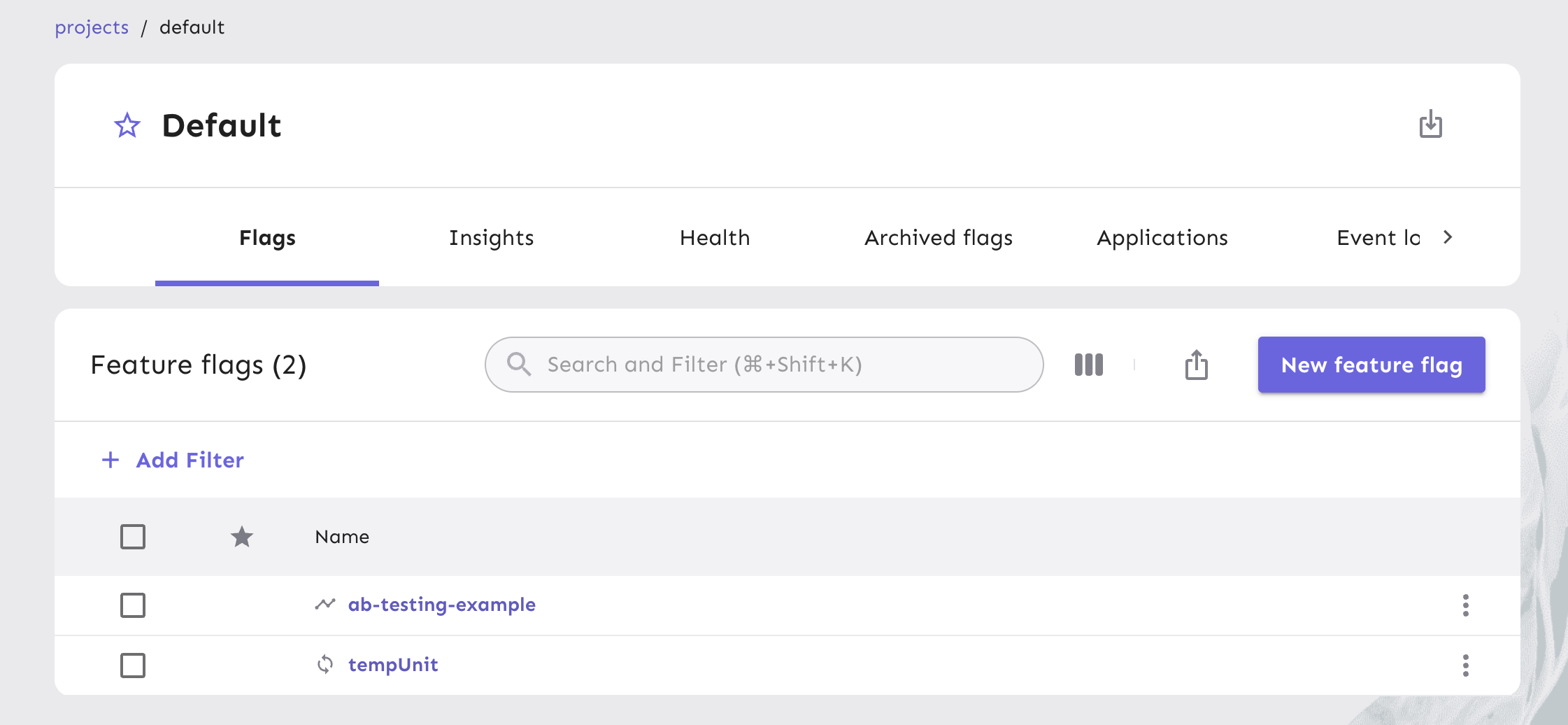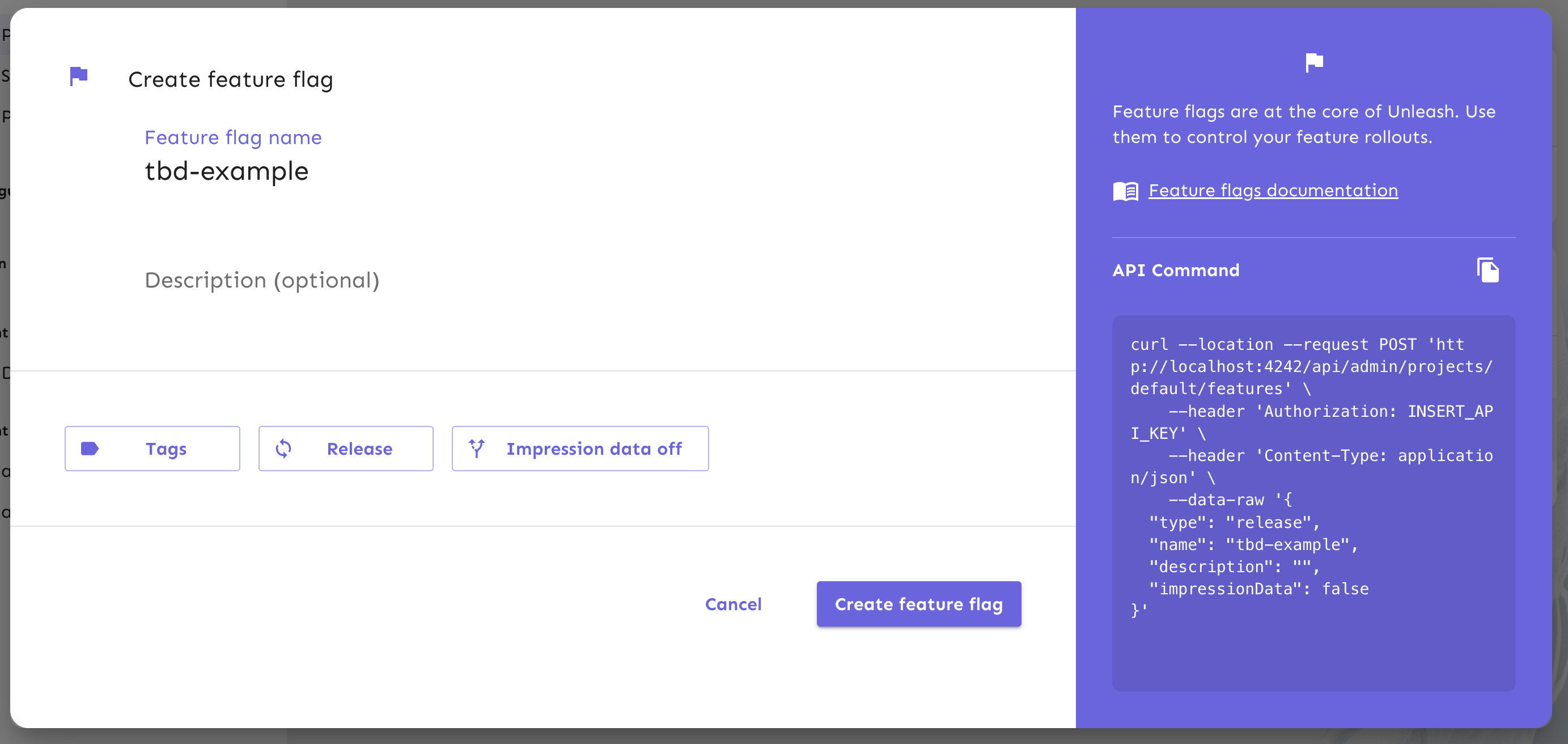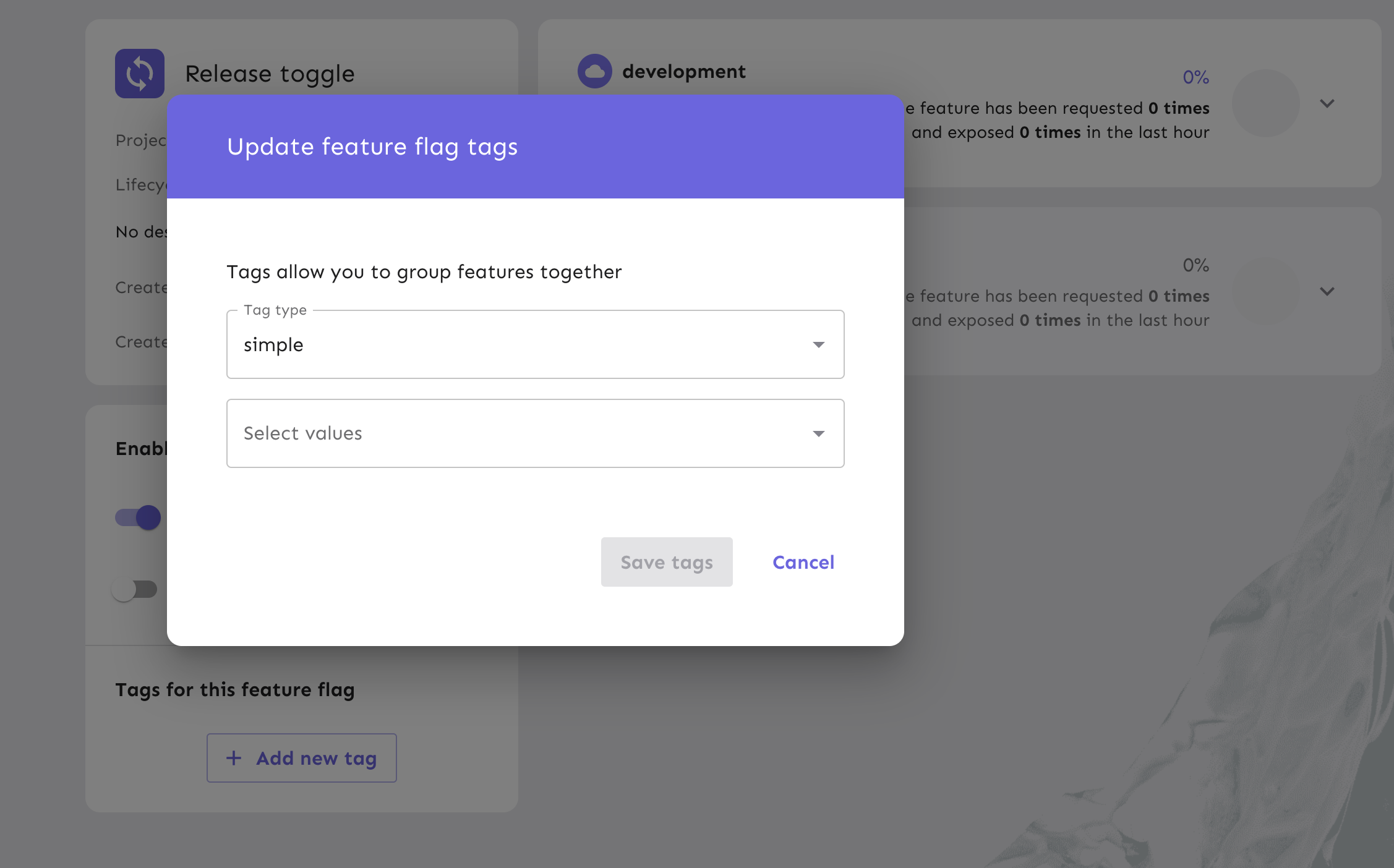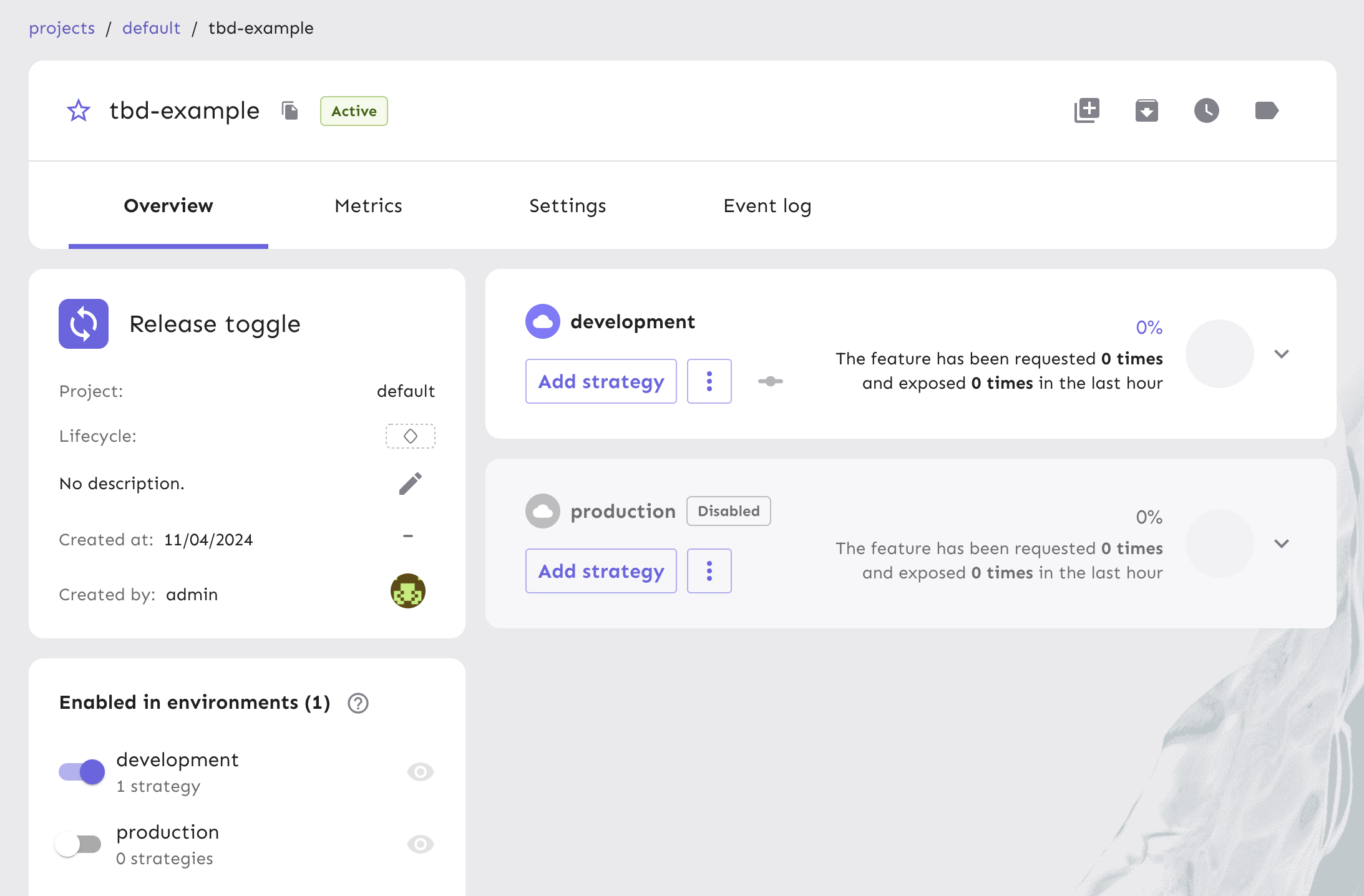How to do Trunk-Based Development using Feature Flags
Developers are increasingly adopting trunk-based development to accelerate software delivery and improve efficiency and reliability. A key principle of trunk-based development is merging code into the main branch (aka "trunk") as quickly as possible. This practice reduces the complexity of long-lived feature branches, minimizes merge conflicts, and ensures that teams can continuously integrate and test their code. However, it also means unfinished or experimental features may exist in production. This is where feature flags become essential.
Unleash provides a powerful mechanism for safely managing and controlling these features in production, enabling enterprises to deliver software faster and with greater reliability. Effective feature flag management ensures that trunk-based development supports continuous delivery without compromising stability. In this tutorial, we’ll leverage Unleash to manage trunk-based development in your codebase.
How to Implement Trunk-Based Development with Feature Flags
To follow along with this tutorial, you need access to an Unleash instance to create and manage feature flags. Head over to our Quick Start documentation for options, including running locally or using an Unleash SaaS instance.
With Unleash set up, you can use your application to talk to Unleash through one of our SDKs.
In this tutorial, you will:
- Explore many trunk-based development strategies
- Create feature flags for incomplete features
- Control feature rollouts
- Simplify rollbacks with Unleash
- Archive and remove feature flags
Choose the Right Trunk-Based Development Strategy for Your Team
There is no one-size-fits-all approach to implementing trunk-based development. Different teams may benefit from varying strategies based on their needs, project complexity, and development culture.
In this section, we'll explore the common trunk-based development strategies and their trade-offs to help you choose the best approach for your organization.
Merge Every Commit
The most frequent approach to trunk-based development is merging every commit directly into the main branch. This strategy maximizes the rate of continuous integration and delivery, as changes are integrated into the trunk as soon as they are ready. Some advantages are:
- Rapid feedback loops and quicker issue resolution
- Reduced risk of large, complex merges
- Encourages small, frequent commits
Some challenges with merging every commit are:
- Potential for more frequent build breaks and test failures
- Increased need for effective merging strategies
- Requirement for robust automated testing and CI/CD pipelines
Merge at Set Intervals
Another common strategy is to merge changes into the trunk at regular, predefined intervals, such as daily or before the end of each work day. This approach offers a balance between frequent integration and managing work-in-progress.
Advantages:
- Improved control over the integration process
- Reduced risk of breaking the build with frequent merges
- Easier to manage and identify integration issues
Challenges:
- Longer feedback loops compared to merging every commit
- Potential for larger, more complex merges
- Requires discipline to adhere to the defined merge cadence
Benefits of Short-Lived Feature Branches
In trunk-based development, it is possible to use short-lived feature branches, which enable teams to implement code review processes without the burden of maintaining long-running branches, which can become increasingly difficult to manage over time. The frequent integration back to trunk significantly reduces the likelihood and complexity of merge conflicts, as changes are merged before they can diverge too far from the main codebase. This approach maintains the core benefits of trunk-based development - such as rapid iteration and continuous integration - while still allowing developers to work in isolation when needed. This isolation can be particularly valuable for making experimental changes or implementing complex features that require validation before being merged into the trunk.
Challenges to Address
The most significant challenge is maintaining the discipline required to keep branches truly short-lived. Teams must develop the skill of breaking down work into small, mergeable units. Additionally, this approach demands a robust testing and CI/CD pipeline to ensure that frequent merges don't compromise code quality or stability. Teams must invest in automated testing and deployment infrastructure to support rapid integration cycles.
Regardless of the specific strategy, Unleash feature flag management capabilities are designed to support a wide range of trunk-based development styles, empowering you to implement the best strategy for your teams.
Microservices vs. Monoliths
The underlying application architecture can also influence the optimal trunk-based development strategy. Teams working on monolithic applications may find more success with less frequent merges, while those working on microservices may benefit from a more continuous integration approach.
Monolithic Applications:
- Larger, more tightly coupled codebase
- Merging at set intervals (e.g., daily) may be more suitable to manage integration complexity
- Increased emphasis on rigorous testing and staged deployments
Microservices:
- Smaller, more loosely coupled services
- Merging every commit is often more feasible due to reduced integration challenges
- Enables more independent development and deployment of individual services
Create Feature Flags for Incomplete Features
Some of the most appropriate feature candidates for trunk-based development are features with significant potential impact on users that may require thorough testing.
In TBD, developers merge incomplete code into the main branch. Unleash feature flags allow this to happen safely by keeping the feature hidden or disabled, ensuring the trunk remains in a releasable state. The flag starts as “off” in production while the feature is incomplete. The flag can be on in development and/or a testing environment until the feature is complete and ready to go live in production for all users.
We’ll create a flag that will wrap around an incomplete feature in your application code. After that, we’ll explore rollout strategies and how they are configured in Unleash to enable trunk-based development.
In the Unleash Admin UI, open a project and click New feature flag.

Next, name the new feature flag. The purpose of this flag is to manage the deployment of a new or incomplete feature. Therefore, the flag we are creating is considered a Release flag type. While release flags are invaluable, they should be short-lived to prevent codebase complexity and technical debt accumulation.

Once you have completed the form, click Create feature flag.
Once your flag is created, you can build a feature in your application code while keeping it hidden in production.
Effectively Manage your Feature Flag and Code
When implementing trunk-based development with Unleash, it's crucial to have a well-structured process for managing your feature flags and the associated code. This ensures the trunk remains in a deployable state while allowing teams to work independently on different features.
Establish Consistent Naming Conventions
Develop a clear and consistent naming convention for your feature flags. This will help maintain clarity and make it easier to understand the purpose and context of each flag. Some recommended elements to include in your flag names:
- The feature or functionality the flag is associated with
- The environment or user segment the flag is intended for (e.g., "prod", "beta", "mobile*users")
- A version or iteration number, if applicable
- A short, descriptive prefix (e.g., "ff*", "feat_"). For example:
ff_checkout_flow_v2_prodorfeat_new_dashboard_beta.
Keep the Trunk Deployable
The trunk should always be deployable, enabling teams to accelerate release cycles and respond quickly to market demands. To keep the trunk in a deployable state, keep the flag off in your production environment. The code for your feature should be wrapped in your flag and, therefore, not executable in production, even though the code will be deployed frequently. This ensures users will not have access to the feature before its official release. Additionally, this promotes collaboration by allowing teams to work independently on different features without interference.
To verify the functionality of your feature while it is incomplete, enable the flag in the development environment in the Unleash Admin UI. In some cases, you may also find it valuable to enable the flag in a testing/QA environment. Unleash environment-specific flag configurations make it easy to manage these different states across your environments. You can quickly toggle flags on or off for specific environments, ensuring the trunk remains deployable in production while enabling active development and testing in other contexts. Use the default production environment toggle in Unleash to enable your flag when you’re ready to make your feature available.
Depending on the size and scope of a feature you’re developing, you may need more than one flag. Generally, we recommend creating as few flags as possible per feature, as making too many flags associated with one feature can become more complex to manage over time with trunk-based development. Our documentation on best practices for feature flags at scale provides more concrete details on large-scale feature flag management.
Leverage Tagging and Metadata
In addition to meaningful names, apply relevant tags and metadata to your feature flags in Unleash. This metadata can include information such as:
- The team or product area responsible for the flag
- The release timeline or planned retirement date
- Associated Jira tickets or GitHub issues
- Relevant documentation or context
- Tagging and metadata make it easier to search, filter, and manage your feature flags, especially as the number of flags grows.
Click Create new tag in the Unleash Admin UI to add these details to your feature flag.

Automate Flag Lifecycle Management
As your codebase and development processes mature, consider automating key aspects of feature flag management. This can include:
- Automated flag archiving and removal: Set rules to automatically archive or remove flags that have been inactive for a certain period, reducing technical debt.
- Integration with your CI/CD pipelines: Automatically create, update, or toggle flags as part of your deployment workflows, ensuring flags stay in sync with the codebase.
- Reporting and analytics: Generate regular reports on flag usage, performance, and health to proactively identify opportunities for optimization.
Automation helps maintain a clean, well-organized feature flag landscape, even as your organization scales its trunk-based development efforts.
Control Feature Rollouts
Once a feature is complete, feature flags enable controlled rollouts. You can gradually expose the feature to users, starting with specific groups or environments, without needing to redeploy the code.
For trunk-based development, you can create a gradual rollout strategy to:
- Determine the percentage of users exposed to the new feature
- Determine the percentage of users that get exposed to each version of the feature
- Per-customer release
- General release
To target users accordingly, let's create an activation strategy. This Unleash concept defines who will be exposed to a particular flag. Unleash comes pre-configured with multiple activation strategies that let you enable a feature only for a specified audience, depending on the parameters under which you would like to release a feature.

The gradual rollout strategy form has multiple fields that control the rollout of your feature. You can name the strategy something relevant to the feature you’re building, but this is an optional field.
Next, configure the rollout percentage so only a certain portion of your users are targeted. For example, you can adjust the dial so that 35% of all users are targeted. The remaining percentage of users will not experience any variation of the new feature. Adjust the rollout dial to set the percentage of users the feature targets, or keep it at 100% to target all users.
There are two more advanced extensions of a default strategy that you will see available to customize in the form:
With strategy variants and constraints, you can extend your overall strategy. They help you define more granular conditions for your feature beyond the rollout percentage.
Simplify Rollbacks
In trunk-based development, the ability to quickly roll back a feature can mean the difference between a minor hiccup and a major service disruption.
When issues are detected, Unleash makes it easy to quickly roll back a problematic feature by simply turning off the corresponding feature flag in your production environment, allowing teams to disable problematic features with just a single click. This allows development teams to address problems swiftly without the need for complex rollback procedures or full code deployments.
The One-Click Rollback Process
Imagine you've just rolled out a new checkout process. Shortly after launch, you detect performance issues or unexpected user behavior. To mitigate this issue, the process to roll back is straightforward:
- Navigate to the Unleash Admin UI
- Locate the feature flag for the specific feature
- Toggle the flag to the "Off" position in the production environment
Instantly, the feature is disabled for all users without requiring a new code deployment, complex rollback procedures, or downtime for your application.
Why Simple Rollbacks Matter for Development Teams
This simple rollback mechanism provides many critical benefits:
- Immediate risk mitigation
- Minimal disruption to ongoing development
- Reduced operational overhead
- Enhanced ability to experiment and innovate
You can simply turn off the feature flag in Unleash, immediately reverting to the previous stable version of the feature.
Best Practices for Rollback Readiness
To maximize the effectiveness of feature flag rollbacks:
- Always have a feature flag prepared before launching new functionality
- Ensure your feature flags wrap complete, identifiable units of functionality
- Train your team on the rollback process
- Set up monitoring to quickly detect potential issues
Archive and Remove Feature Flags
Once a feature is fully rolled out and stable, the feature flag should be archived or removed. This reduces clutter in the codebase and prevents unnecessary complexity.
As your codebase and feature set grow over time, it's important to maintain visibility into your feature flag usage and lifecycle. Regularly review which flags are active, which environments they are enabled in, and when they were last modified.
Unleash provides reporting and analytics capabilities to help you monitor your feature flag landscape. This allows you to identify obsolete or unused flags, and plan for their eventual archival or removal, keeping your codebase clean and manageable.